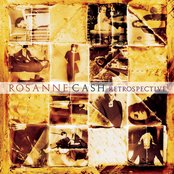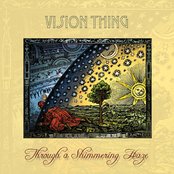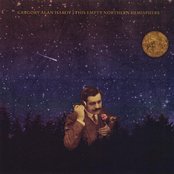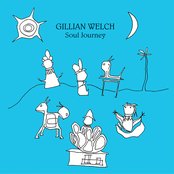Here’s a bit of original research sent in for readers to peruse from the wonderful Andy Dennis. This is a further, almost forensic investigation of the Harrison family, local mine-owners and industrialists. This is an exemplary bit of research, and I’m in awe, quite frankly, that this humble blog should inspire such great work, entirely for the benefit of other readers and local historians.
Observant readers will have noticed a link between the Harrison empire and Andy’s family, more on which in the text. Thanks are due for yet another excellent contribution toward the written history of our area. You folks never cease to amaze me…

William Harrison wasn't noted for his high standards of employee care. From 'Brownhills and Walsall Wood on Old Picture Postcards' by Jan Farrow.
In the search for William Harrison, I found a record in the 1841 census in Stafford Street, Walsall, which I believe was once well-to-do. William Harrison (35, Lime Master, not born in county [Staffs], wife Mary (35), children John (13), Eliza (6), Willm (3) and Edwd (1). I quickly found records of baptism for John, William Bealey and Henry Edward, but nothing for Eliza. As it turned out Eliza was the key to finding William Harrison, presumably the founder of William Harrison Ltd.
I can produce a diagram if requested, but the trail is here:
1. I found, in a somewhat eclectic list of references to newspaper articles, a note of a marriage between a Rev. Robert Baker Stoney and Eliza Bealey Harrison on 16 May 1862. It summarised that the bride was 4th daughter of William Harrison Esq of Norton Hall & Eastland House, Leamington. (Birmingham Daily Gazette.)
2. The marriage checked out (General Register Office) and later Rev. Robert B Stoney (Rector of St John’s , Wednesbury) and Eliza B Stoney were at The Bridge, Walsall; and in 1871 at Church Hill, Wednesbury. So the connection between Norton Hall and Leamington looks solid.
3. In 1861 William Harrison at Eastland House, Leamington (63, widower, magistrate, born Middlewich, Cheshire) with daughters Emma (30), Eliza (25) and Adelaide (18).
4. Emma christened 3 Mar 1830, St Matthew, Walsall and Adelaide christened 9 Nov 1842, St Peter, Walsall, parents William Harrison and Mary Bealy (Familysearch, International Genealogical Index – IGI).
5. In 1861 William Bealey Harrison (WBH) was recorded at Norton Hall with older brother John, a barrister not in practice. Both were born at Walsall (see 6 below).
Armorial families: a directory of gentlemen of coat-armour, records that “WILLIAM BEALEY HARRISON. Esquire. J.P. and D.L. co. Stafford, High Sheriff 1897 … being the second son of William Harrison, Esq., J. P., of Norton Hall, co. Stafford … by Mary, eldest dau. of John Bealey, Esq., J. P., of The Hills, Bloxwich.”
In 1851 John was an undergraduate at Christ’s College, Cambridge and WBH at Appleby Grammar School, Derbyshire, so no confirmation of parents there.
Also in 1851 William Harrison, (53, Magistrate, Proprietor of Coal Mines, born Middlewich, Cheshire) visiting at 6 Clarendon Close, Leomington. Perhaps Norton Hall was closed up and therefore not recorded in the 1851 census?
And in 1871 William Harrison (73, landowner) at 13 Clifton Villas, Leomington, with daughter Adelaide (unmarried).
6. John and WBH were both christened at St Matthew, Walsall. John on 27 Jun 1828, parents William Harrison and Mary and William Bealey Harrison on 14 Feb 1838, parents William Harrison and Mary Bealey (IGI).
7. Back to 1841. At first sight this looked uncertain, but children John and Willm are the right age. There is also an Eliza. William (snr) not born in county. It all fits. The occupation Lime Master signified ownership.
British History Online tells us: “In 1826 Walhouse re-let the works, then known as the Butts Limeworks, to George Strongitharm of Daw End in Rushall, Samuel Wagstaff of West Bromwich, and William Harrison of Walsall”, so he was part of a mine-operating syndicate. Perhaps by coincidence, but more likely following acquaintance via the upper echelons of social circles, George Strongitharm married Ann Bealey Standly or Stanley. She was not sister of WBH’s wife Mary, but surely was closely related; probably first cousin. I’ve no idea where Standly or Stanley comes from.
So, the original William Harrison was born at Middlewich, Cheshire in about 1798 (ignore 1841 census as ages of adults were usually rounded). I have not found any obviously relevant record. His local career began in limestone in the 1820s and then progressed to coal in the 1840s. He was still alive in 1871.
I have not found him in 1881 or relevant records of death or probate.
Middlewich was itself a mining settlement, just a different mineral – salt. There is a record of an application in the High Court as recently as 2004 against a Sir Michael Harrison to quash a planning permission to extend salt mine workings at Middlewich (John Kent v. First Secretary of State and others – [2004] EWHC 2953 (Admin)). Just circumstantial, but …
8. Again from Armorial Families William Harrison’s wife was the “eldest daughter of John Bealey of The Hills, Bloxwich”. I cannot find anything more about Bealey.
9. A Joseph Bealey (fl. 1781-1851) farmed at The Hills. He was father of Ann, who married George Strongitharm, William Harrison’s partner. Their son, also George Strongitharm, was Lime Master and Farmer and was visiting WBH at Aldershaw in 1891. Another son, John Bealey Strongitharm, was also Lime Master for a time, but after 1871 was an Oil Merchant on Merseyside. Ann’s brother, John Edward Bealey was also a magistrate.
To round off the Aldershaw(e) census story: in 1901 WBH (Magistrate D.L. and Colliery Proprietor) was away visiting in Elwell, Surrey, but his wife was at home, minding the servants; and in 1911 WBH (Iron & Coal Master) was at Aldershawe (now spelled with an ‘e’).
With all these upstanding people, officers in the T.A., magistrates, J.P.’s, Doctors at Law, barristers, parliamentary candidates, you might hope they could be trusted by the working man, but we have seen just what sort of managers they were. You saw the notice to Ted Brown in 1930 and we have read that William Harrison’s workers were forced to forego rights to compensation and even “volunteer” for the Territorials. Another relative of my ancestors, a George Carter, was killed by an “accident” in Brownhills No 3 pit in 1906; I wonder how much compensation his family got. I’m pretty sure I can imagine more or less what Ted and George would have said, but this is a family blog …
Picking up on your recent post about sources, I appreciate this is not quite up to postgraduate dissertation standards! Nonetheless, I think there is enough information for readers to find my sources and hope the logic stands up. If anyone wants to ask about my sources, please do so, they are all online and I will point them out. 1841, 1851, etc. refer to England census unless otherwise specified. Naturally, I have also taken into account Brownhills Bob’s Brownhills Blog, especially Pedro’s news cuttings.
Andy Dennis 5 April 2012.


 RSS - Posts
RSS - Posts









Andy, nice piece of detective mate, well done.
William Harrison raised a company of men for the Royal Engineers from his employees. This became the The 2nd North Midland Field Company, Royal Engineers. he also offered his family’s ancestral home, Norton Hall, to the Territorial Force Association for use as its Drill Hall. HQ North Midland Division Engineers moved to Norton Hall in 1912, on the promotion of Major William Harrison (W.B. Harrison senior’s son) to Lieutenant-Colonel.
This information came from local military legend, Andrew Thornton, who has an encyclopaedic knowledge of local military units. His e-thesis can be found at http://etheses.bham.ac.uk/14/3/Andrew_Thornton_Thesis.pdf
Awesome.
To round off William Harrison’s life, here is an extract from the Probate Calendar 1877
HARRISON William Esq.
7 May. The Will with four Codicils of William Harrison late of Eastland House Leamington Priors in the County of Warwick Esquire who died 23 February 1877 at Eastland House was proved at Birmingham by William Bealey Harrison of Acton Villa Milverton Leamington Priors Esquire the Son the Reverend Thomas Hutton of Stilton Rectory in the County of Huntingdon Clerk Henry Brace of Walsall in the County of Stafford Merchant and John Harrison of Norton Caines [sic] in the County of Stafford Esquire the Son the Executors.
Effects under £100,000.
Lawyers do not like punctuation!
“under £100,000” follows the usual formula and probably means something above £95,000.
AD, 8 April.
Pingback: On the ‘Shawe « BrownhillsBob's Brownhills Blog
Thanks Andy for setting out in such detail, I am sure we can now dig up further information.
So the original William Harrison Esq. was born at Middlewich in around 1798 and died in 1877; his career beginning in limestone.
In 1826 British History Online has him, at the age of about 28, at Butts Limeworks. I think this could be near Walsall as I have come across a sale of the estate of John Adams in the Birmingham Gazette of 7 Sep 1835…
Extensive sale at Butts Lime Works near Walsall. (including engines!)
In 1862 he is down at one of his residences, being Norton Hall. I wonder when he actually bought the Hall?
Regards Pedro
Thanks, Pedro. Forgive me if you know this. The Butts is an area to the north of walsall town centre centred on Butts Road, including the area between Borneo Street and Lichfield Road (A461). This area was extensively mined for limestone and the mines “robbed”, which led to serious danger of subsidence. Rushall Church stood above an enormous hole, about the same depth as the height of the steeple (it could have swallowed the church whole). This was known as James Adams Mine. Infilling was carried out in the 1990s (from memory) to stabilise the ground. Previously, residents were unable to sell their houses, which were effectively worthless and, without treatment, the whole area would probably have declined into dereliction – take a look round Bentley Road South and Willenhall Road in Darlaston to see what impact an untreated mine can have. The Council will not grant planning permission for new development in these areas.
Limestone mining was obviously an enormous industry. There was a band of large mines stretching from Daw End (where the road collapsed), through Walsall town centre, Darlaston Green and on to Dudley. It appears most were mined by the pillar and stall method, whereby columns or pillars of rock were left to hold up the roof. In some cases these pillars were further reduced or “robbed” so that subsidence became more likely.
The area at the north end of the town centre, around Townend and the canal basin was also mined. No development could take place until the abandoned workings had been grouted. I recall this cost in the region of £8 or 9 million, but this has enabled many, many times that in investment in new buidlings and infrastruture. I think the cost of treating James Adams was similar. It is the equivalent of throwing money down a hole, never to be seen again.
Hi Andy, thanks for the info as I am not familiar with the area, but certainly I can check around Darlaston.
Let me throw this into the mixer…
Graeme highlights the site for Andrew Thornton’s thesis concerning the Territorials in Staffordshire…
http://etheses.bham.ac.uk/14/3/Andrew_Thornton_Thesis.pdf
I had already come across this excellent piece of work concerning the TA, and we can extract information concerning the Harrison family from it, but reading this in isolation can give a false impression.
Captain W.B. Harrison, in 1909, offered the use his family’s ancestral home at Norton Hall for use by the TA.
His father, W Harrison Esq. was born in Middlewich around 1798 and seems to have a Lime Master in the local area in 1841, with a connection to Stafford Street, Walsall. According to Gerald Reece, Harrison took over the lease of collieries around 1849, and is recorded at Norton Hall in 1851, but also had properties in Leamington. Did he build Norton Hall? Anyway to call the house of your old man an ancestral home seems a bit grand!
Captain Harrison’s son WE Harrison filled the role of officer commanding the new company and was immediately appointed to the rank of Major despite having no previous military experience. He later becomes Lieut-Colonel, and when these titles are in everyday use they would not suggest any difference from the Regular Army. The Lieut-Colonel, seems to have purchased Aldershaw House in 1894.
WB appears as Captain Harrison, and as such stood for the Lichfield seat as a Tory, in the 1900 election. In his address he says that he had been to South Africa twice, and had an interview with President Kruger. Quite how a captain would get a personal interview seems strange, but perhaps he was there in another capacity.
The description “novel technique” for recruitment to the TA of men seeking work at his company, could by some cynics be termed as blackmail. In fact his opponents in the election of 1900 accused him of being one of the first employers in the neighbourhood to use a clause in the Workman’s Compensation Act to contract out. Thereby his workers got less compensation than those in Warwickshire.
WE Harrison, the Lieut-Colonel, seems to have purchased Aldershaw House in 1894
Pedro
At lecture at the Chasetown Institute in July 1900 (Lichfield Mercury), Captain WB Harrison tells of his meeting with Kruger. It was in the capacity of President of the Mining Association of Great Britain.
His interest in coal extends many miles from Brownhills!
Pedro
Lichfield Mercury August 28th 1908…
Norton Hall when offered for use to the TA had been unoccupied for several years!!
Pedro
Pingback: A not so private function « BrownhillsBob's Brownhills Blog
For the sale of Aldershawe in 1913 see the post…
http://brownhillsbob.com/2012/04/08/on-the-shawe/
On that post I commented that for W.E.Harrison it was Onward and Upward.
W.E. had purchased Wychnor Estate in the September of 1912, and his father had died in March leaving the Aldershawe Estate to him. On the purchase his previous dwelling was Orgreave Hall at Alrewas…
Grade II Listed Building
http://www.britishlistedbuildings.co.uk/en-272539-orgreave-hall-and-attached-stables-alrew
Being cynical it appears to me that W.E. was quick to move Onward and Upward!
Somewhere I found a connection to Orgreave Hall, but at the time it made no obvious sense. I’m sure it must have been earlier. I’ll check it out tomorrow – unless the weather’s too nice.
Link to picture of Orgreave Hall, it was until recently in use as a care home…
http://www.panoramio.com/m/photo/72638563
Regards Pedro
Lichfield Mercury on the 29th of March 1912 announces the death of Cpt. WB Harrison…
Captain WB Harrison had for many years been a member of the Mining Association of Great Britain, and up to the time of his death (would you believe) he was the representative on the Conciliation Board of the Cannock Chase Coalowners’ Association.
When the present crisis arose (1912) he took an active part in negotiations between the coal owners and the miners’ leaders in the endeavour to reach an amicable settlement, but about a fortnight before his death he was stricken with influenza and had to return from London to Aldershawe….
…in 1860 he gained the commission as an officer in the 22nd Brownhills Co. of the Staffs Volunteer Corps…
…from boyhood keen on cricket and played for the All England 11…founded “Cricket Week” at Aldershawe, and supported Staffs County Cricket…Supporter of the South Staff Hunt…
…He had said that when he was around 18 to 20 he had often “had the gloves on” with miners employed at his father’s collieries. Upon such occasions the colliers gave him a “good hammering”, and sometimes he gave them a Roland for their Oliver…
…served as High Sheriff of Staffs and subsequently appointed Deputy Lieutenant of the County…
…defeated when standing in the 1900 General Election for the Lichfield seat…
On the death of WB Harrison in 1912, he was succeeded by his son WE Harrison who in turn died in March of 1937.
Following on from Andy’s entry about the will of W Harrison Esq in1877 here are some details reported by the Tamworth Herald concerning the will of WE Harrison in 1937…
Gross estate of the value £1,403,069 14s 5d
with net personalty £1,249,424 16s 4d
Estate duty of £505,320 10s 2d
After a pecuniary legacy to his wife and a bequest to his son Nicholas John Harrison of shares in the Cannock Associated Collieries, he bequeathed legacies to the following servants, Secretary Skinner, £500; bailiff Furber £100; chauffeurs Hurd and Bloomfield, £100. After directing the appropriation of funds for the benefit of his wife, his daughter and his son Nicholas, he devised and bequeathed his residuary estate upon trust for his son William Herbert Harrison absolutely.
(Andy cites…“under £100,000” follows the usual formula and probably means something above £95,000.”…and so the fortune has increased over 10X in two generations…William seems to be a popular name)
Crikey, That’s an immense amount.
Wonder what became of it all?
Cheers so much, this work is fascinating me
Bob
From the book Gentrification and the Enterprise Culture in Britain 1780 to 1980, by FML Thompson…
…Until 1926 valuation of assets at death was substantially only evaluation of the personalty owned by the deceased, that is stocks and shares, the plate and jewellery, and other movable property, excluding any Land or house property; before 1898 the value was exclusively of personalty…
….Another coal master, WB Harrison, the leading man on the Cannock Chase field, did rather better in leaving £270,000 when he died in 1912; on top of that he had bought the Wychnor Park estate in Staffordshire, and had already handed over most of his business interests over to son (WE Harrison), and that on appeared as the first recorded millionaire in the family, in 1937.
Presumably, WH Harrison was one of those who had “a good war” and then received a certain amount of compensation when the mines were nationalised?
And the story continues…
Elcha Cecilia Hore-Ruthven1
F, #70606, b. 3 March 1912
Last Edited=3 Sep 2006
Consanguinity Index=0.0%
Elcha Cecilia Hore-Ruthven was born on 3 March 1912.1 She is the daughter of Charles Hore-Ruthven and Elyned Rhoda Wood.2 She married William Herbert Harrison, son of Lt.-Col. William Edward Harrison, on 7 June 1934.1 She and William Herbert Harrison were divorced in 1968.1
From 7 June 1934, her married name became Harrison. She lived in 2003 at Knoll House, Aylsham, Norfolk, England.1
Children of Elcha Cecilia Hore-Ruthven and William Herbert Harrison
Rhona Moya Harrison+2 b. 17 Jun 1936
Zara Carolyn Harrison+2 b. 29 Mar 1938
Susan Juliet Harrison+2 b. 28 Feb 1945
Susannah Harrison+2 b. 26 Nov 1946
Citations
[S37] Charles Mosley, editor, Burke’s Peerage, Baronetage & Knightage, 107th edition, 3 volumes (Wilmington, Delaware, U.S.A.: Burke’s Peerage (Genealogical Books) Ltd, 2003), volume 1, page 691. Hereinafter cited as Burke’s Peerage and Baronetage, 107th edition.
[S37] Charles Mosley, Burke’s Peerage and Baronetage, 107th edition.
****************
Zara Caroline married Major Arthur Edward Campbell-Harris MC IA of Belgravia
****************
Cannock and Rugeley Colliery Co.
Sep 1955 WH Harrison, Director, of Wychnor Park appointed liquidator as the Company was being wound up.
******************
1964 followed in old man’ footsteps being High Sheriff of Staffordshire.
*******************
Born 1909 and died 1977
Cannot find any info on the youngest son, Nicholas John Harrison.
Harrison Family revisited
With Andy’s groundwork, and information from a book called William Harrison Limited by Mick Drury, I have discovered a further previous generation of the family. To tidy up a bit, the William Harrison aforementioned as Esquire will now be called William Harrison Jnr.
William Harrison (Senior) (????-1850)
William Harrison (Junior) (1812? Or 1798?-1877)
William B Harrison. (The Captain) (1836-1912) brother John Thomas Harrison
William E Harrison. (The Colonel) (1875-1937)
William H Harrison. (1909-1977)
There is a problem here in as much as Andy finds that W Junior was 73 in 1871, and this would bring his birth to around 1798. Mick Drury puts the birth at around 1812
As Andy mentions WB to be 3 in the 1841 census that would agree with his birth date of 1836
The book also states that W Harrison (Senior) was listed as Coal Master and living at Morton House, Brownhills in 1834, with his sons John and William. Does anyone have an idea where this house might have been?
Regards Pedro
also added here should be John Harrison (b1828), the older brother by 10 years of the Captain, WB Harrison.
He also appears in the dealings.
As he is older than the Captain I wonder why he was not called William!?
More info gives revised history…
William Harrison (Senior) (1768-1850?) born in Witton, Cheshire
William Harrison (Junior) (1798-1877) born in Middlewich, Cheshire
William B Harrison. (The Captain) (1836-1912) born in Walsall, brother John Thomas Harrison
William E Harrison. (The Colonel) (1875-1937)
William H Harrison. (1909-1977)
The only Witton in Cheshire that I can find is in Nantwich, which is another salt town, so fits the general profile. Doesn’t help with records, though. Any indication of Mick Drury’s source?
Stand by Andy, it is my info!
I will get it together and post in a more complete form. It opens a lot more questions, but I think you will have a chuckle!
all the best Pedro
Hi Pedro
thanks for this fascinating information. Was Morton House the original name for Coombe House, in Engine Lane, I wonder?
Also, given that the band of limestone mines was where it was..the Goblins Pit supposition that it was a limestone pit..on its own and a long way from other mines..seems to be more tenuous, even more so that it may have been a “borrow pit” perhaps.
Pedro and Andy, your excellent research is something special !!.
kind regards
David
Just a quick reply for now. Sons John & William born 1828 and 1838 respectively – problem with 1834. Could be Norton House / Hall? I haven’t found anything that looks a likely birth / baptism for William jnr. or anything convincing for snr. Doesn’t mean it didn’t happen, just haven’t found them yet.
Not sure if it’s the same thing, but GENUKI says: “Moreton is a scattered hamlet of four farms and 42 inhabitants, four miles NW by N of Rugeley. Moreton House, a modern brick mansion upon a lofty summit, is the seat of William Hanbury, Esq.” and The Family Topographer: The Oxford circuit: Berkshire, Gloucestershire … Stafforshire … 1834 has “Morton House William Hanbury esq.”
I’ve also found a reference to White’s Directory 1851, which says William Hanbury and Phineas Hussey are the principal owners and lords of Norton; then, under Norton Canes Parish, Brownhills: William Hanbury esq., colliery owner, Moreton House and William Harrison esq. colliery owner Norton Hall.
The western part of Brownhills, i.e. west of Hammerwich parish, including Watling Street west of Howdles Lane and Chester Road west of the railway or thereabouts was in Norton parish. Unfortunately (for us) Hanbury, born Norton Canes about 1773, was living at Colwich in 1851 – no further locational information – and neither house is named in Norton Canes 1851.
The Middlewich Connection
Chester Courant 11th October 1831…
Manor House lately the residence of Richard Jones Esq deceased situated at Stanthorne, in the parish of Davenham, in the county of Chester, with Lands, gardens….excellent pasture, arable land and meadow in the holding of Mr William Harrison.
The mansion is beautifully situated within half a mile of Middlewich.
Lot 2…seven pieces or parcels of LAND also in the occupation of W Harrison.
….this property adjoins the river Weaver, is surrounded by Salt Works and abounds with brine and rock salts….
We know from Mick Drury’s book that WH Snr was, in 1834, listed as Coal Master at Morton House (possibly Andy says maybe Norton Hall), and that WH Jnr was born around 1800 in Middlewich.
WH Jnr was into limestone around Walsall before moving into coal.
So maybe WH Snr was mining salts on lease from the land owned by Richard Jones in 1831 at Middlewich, and moved to Norton Hall around 1834 with his son WH Jnr.
Perhaps they were into both coal and limestone? WH Jnr owned Eastlands in Leamington before 1861. As his old man died in 1850 he could afford to have two homes, keeping Norton Hall.
William Harison Jnr the Lime Master.
…January 1836…George Rutter between 70 and 80 years old, went one evening to the offices of W Harrison, Lime Master in Stafford Street in Walsall, for the purpose of being paid for some work. He went up a flight of 10 or 12 steps by which the office is approached, to see if Mr Harrison was in; finding he was not he turned, and there being no light, he fell from top to bottom. He died on the following Monday.
…October 1839…On Monday night a ewe lamb, belonging to Mr Harrison, Lime Master, Walsall was feloniously slaughtered in a field adjoining Long Wood Lane, and the carcass taken away. No trace has yet been had of the offenders, but a reward is offered on conviction.
… April 1841…William Harrison, Lime Master, appointed church warden at St Peter’s Church Walsall.
Andy gives the info..?
…And in 1871 William Harrison (73, landowner) at 13 Clifton Villas, Leamington with daughter Adelaide (unmarried).
Could this be the place of his retirement?
http://www.search.windowsonwarwickshire.org.uk/engine/resource/default.asp?theme=1728&originator=%2Fengine%2Ftheme%2Fdefault%2Easp&page=8&records=612&direction=1&pointer=4331&text=1&resource=19503
Makes sense. Leamington was a fashionable spa town an attracted wealthy people like WH. Not sure Clifton Villas survive today, but it looks like it was pretty grand – take a butchers at http://www.search.windowsonwarwickshire.org.uk/engine/resource/default.asp?theme=&originator=%2Fengine%2Ftheme%2Fdefault.asp&page=6&records=22303&direction=2&pointer=4531&text=0&resource=19503
I suspect Eastlands House has gone, too.
Pingback: The truth will out « BrownhillsBob's Brownhills Blog
The old name for Royal Leamington Spa was Leamington Priors.
This produced the address of Eastland House as being in Leam Terrace.
There is nothing called Eastland House at present, but I think it must still exist in some form. If you fancy a move from Brownhills to Leam Terrace why not try Flourence House going for a cool 1.35 million quid!
Check the agent out here…
http://www.globrix.com/property-details/38925486-leam_terrace-leamington_spa-cv31-6_bed-house
In around 1830 William Harrison, Lime Master, was in the partnership Messrs Harrison and Wagstaff and Co. John Wagstaff from West Bromwich was also with Harrison in Butts Limeworks mentioned by Andy from 1826.
They also possessed Baskerville Wharf in Birmingham.
On the 30th of April 1830 their engine house situated near to Stafford Street was broken open and quantity of brasses belonging to the engine were stolen…as other robberies had taken place “there can be little doubt that a daring gang of thieves infest the town and neighbourhood, and in too many instances they commit their depredations with impunity.” (Staffs Advertiser)
More info to follow concerning the Harrison family when I can put it in an understandable form.
All the best Pedro
Can the Harrison family be traced back further using Andy’s groundwork? I put a theory forward to be falsified!
Taking the 1861 census we have W Harrison (Junior) being of an age of 63 and recorded at Eastland House in Leamington. He was born in Middlewhich, Cheshire, and his birth date would be 1798. He was married to MARY BEALEY STANLEY in 1825 in Walsall.
So appealing to the Latter Day Saints a search can be made for a William Harrison that was born say between 1793 and 1803 in Middlewich. This brings up only one likely candidate born in 1797 to parents William and Sarah Harrison.
William Harrison being born in Witton in 1768, and Sarah in Middlewich also born in 1768 both in Cheshire.
Looking on Sarah’s side would you believe her maiden name is SARAH STRONGITHARM!
There is also a marriage in Cheshire for a William Harrison in 1767 that could well be the father…the name William has certainly been handed down!
Would you believe that in Davenham, Cheshire there is a birth in 1768 of a George Strongitharm. This is close to the SARAH STRONGITHARM born in Middlewich and with a margin of error they could be sister and brother!
This George S marries an Ann Williams in Rushall in 1800, and has a son called George S who marries an ANN BEALEY STANLEY at Rushall in 1834! The sister of MARY BEALEY STANLEY!
Remember from 1826 we see that Harrison and George S are partners at Butts Limeworks
I’ve done what I can to check this and it seems to hang together pretty well. Marriage to Sarah Strongitharm looks feasible, which increases the likelihood that George Strongitharm is from the same area, though, given the strength of circumstamcial evidence, it would still be nice to find a clearer link in that family between Rushall and the “‘wiches” of Cheshire, if it exists.
Bealey Stanley is more mysterious. Earlier, I saw that Mary Bealey Stanley was the eldest daughter of John Bealey of The Hills, Bloxwich. However, the only baptism I can find (5 Nov 1800, Bloxwich) gives her parents as Joseph Bealey Stanley & Ann, to whom it appears she was the eldest daughter. Joseph Bealey was at Hill House, Bloxwich in 1841, with children John Edward and Eliza. I suspect, therefore, an error in “Armorial families: a directory of gentlemen of coat-armour”.
For Eliza[beth]’s baptism ‘Stanley’ is dropped, but reinstated for baptism of John Edward Bealey and Emma Bealey Stanley (both 13 Oct 1808) – same parents as Mary Bealey Stanley, but children baptised on the same day were given different names.
The baptisms of George and Ann Strongitharm’s children all record Ann Bealey Stanley (variant spellings) as mother. I have not found a likely baptism for Ann Bealey Stanley or permutations, though it seems unlikely, if not inconceivable, that she is not Mary Bealey Stanley’s younger sister.
Mother Ann Bealey Stanley (Joseph’s wife) was buried in 1827 age 55. Was she born Ann Stanley? Two candidates baptised 1774 and (more likely) 1771.
Stongitharm is obviously an old name and is descriptive; I wonder if an ancestor was among the triumphant archers at Agincourt?
Looking again it seems you can interchange Rushall and Mavesyn Ridware. This suggests to me that George S, whose lime works were in Rushall, like others actually lived further out in the sticks!
Cannot find any more suitable Strongitharm in Rushall or Mavesyn.
But interestingly I found a marriage for 1823 between a GS and an Ellen Stanley. Could she have died and he then married Ann Bealey Stanley in 1834?
One thing is certain we know a lot more than we did a few months ago!
All the best Pedro
Andy,
Are there any reminders of the Lime Works in Rushall and the Butts remaining today?
Regards Pedro
Someone has thrown a spanner in the works! It has been picked up on Ancestry before. Records on Ancestry and LDS re England & Wales Christenings. I think in this case Mavesyn Ridware is a red herring. See, for example, Elizabeth Strongitharm born about 1838 Rushall in 1851 census ties in with baptism Rushall 26 July 1838. All other records point to Rushall. Using Hugh Wallis’s site I believe the correct records for Mavesyn Ridware are dated and the bogus ones not.
Yes, George S did marry Ellen Stanly first and they had a son Edward in 1826.
Pedro, re legacy of limestone mining very little remains. Much of the area was built over, exceptions include Park Lime Pits and the lake in the Arboretum, which are public. Much of the legacy is surface damage, such as when Bosty Lane collapsed, but this has been repaired, and the cracking up of Mellish Road Methodist Church, now demolished. Linley Wood SSSI has some remains, covered by BrownhillsBob – http://brownhillsbob.com/2012/01/28/urban-exploration-at-linley-caverns-in-1957/, but I think that’s about it.
Thanks for the link, I had missed that post by Bob.
This is right in the area that George Strongitharm had the lease of the Lime Pits in the 1830’s!
Where would the Butts Lime Works be in relation to Stafford Street in Walsall?
One thing I am becoming quite certain of is that the Harrison Family were not involved in the area during the last two decades of the 18 Century.
Regards Pedro
Dropped a proverbial …
Eleanor (aka Ellen) Stanley (1785-1863) was recorded in 1851 as a widow, so must have married the older George S (1769-1827). He also married a Fanny Hawkins in 1811 and they had a daughter Fanny in 1818.
Talking of George Strongitharm and his Lime Works in Russhall…Sat 20th March 1830 Staffs Advertiser…
William Darby was before the Stafford Crown Court for stealing a ewe sheep at Rushall, the property of George Strongitharm…he was found guilty and a sentence of Death was recorded against him!
Looking in the Convict Records there was a William Darby sent, by Staffs Assizes, to Tasmania on the 9th October 1830.
Might as well be hung for a sheep as a lamb!
Re William Harrison
I am researching a Lt Col William Albert Harrison. I know he was born in England in 1857 and served in the Boxer Rebellion. He migrated to Australia and married my great grandmother Annie Terrey (nee Marks) in 1921. He died in Australia in 1948, aged 81. This is all I know.
Is there anyone in the family you have been researching which could possibly be a link?
Thanks
Miranda
Hello Miranda. I think I have tracked down all of the grandsons of William Harrison (1797-1876) and there is no William Alfred among them. If you subscribe to Ancestry you could check my Harrison Mining tree.
Andy
Hello Andy. My cousin reminded me there is a photo of William in the full dress uniform of the Royal Engineers so I will try that avenue. Thanks anyway!
If you can identify the regiment it might narrow the search down to a county and then might be worth seeking help via Rootschat. There can’t have been many of that name and rank in one county. (England is probably a bit broad, but you might get lucky.)
In 1851 George Strongitharm was living at The Villa, Rushall.
I don’t think it is there now, but here is a link to the 1889 map…
http://www.british-history.ac.uk/mapsheet.aspx?compid=55137&sheetid=8320&ox=901&oy=1341&zm=2&czm=2&x=403&y=368
Pingback: In pursuit of the truth « BrownhillsBob's Brownhills Blog
Andy mentions a son named Henry Edward Harrison, being 1 year old in the 1841 census, sadly Henry died in his second year in 1842. RIP
And so in a circle back to ELIZA!
Leamington Spa Courier 24 May 1862…
STONEY-HARRISON
Marriage on the 14th inst at Norton Canes (by the Rev Thomas Hutton, rector of Stilton, brother in law of the bride, assisted by the Rev Richard Wanstall, Norton Canes) the Rev Robert Baker Stoney, rector of Castlebar, Ireland, to Eliza Bealey, fourth daughter of William Harrison Esq of Norton Hall and Easyland House, Leamington.
Pingback: Light and graceful | BrownhillsBob's Brownhills Blog
Pingback: An electoral deformity | BrownhillsBob's Brownhills Blog
“How do you solve a problem like Eliza?” This is the question posed in the second BBC programme of “Britain’s Biggest Dig” and the HS2 archaeology of Park Street Cemetery in Birmingham. It traces the life of poor ELiza Bull who died at the age of one year and nine months and was buried in the cemetery. (Available on IPlayer.)